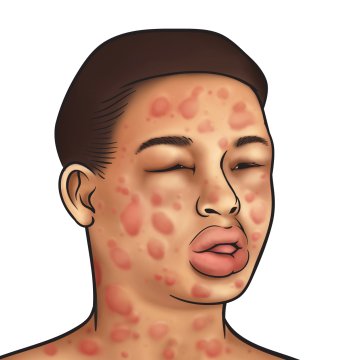
This spring, as beautiful flowers start to blossom, individuals with asthma and allergy are again concerned about possible recurrence of their symptoms. Although most people develop only mild to moderate symptoms that can be treated easily, others can suffer from severe allergic reactions or anaphylaxis – a life-threatening emergency that involves multiple body organs. During this time of the year, people at high risk for anaphylaxis should practice extra caution and restraint. Learning first aid for anaphylaxis is timely.
Springtime brings many risks for allergy. Aside from the abundance of pollen in the air due to blossoming of flowers, bees and other stinging insects abound during the warm climate. Bee and insect stings are known to cause severe allergic reactions. Individuals who have history of anaphylactic reaction or allergy should avoid getting stung. They should prevent places where insects frequent to minimize their exposure to insects.
Even if you do not have a history of allergic condition, you can develop anaphylactic reaction and require first aid for anaphylaxis. People with family history of allergic conditions, such as hay fever, skin allergies or asthma, should also watch out for possible allergy. According to some experts, people who have both food allergies and asthma are at high risk for anaphylactic reaction as compared to those who have either of the conditions.
Springtime is also very tempting to engage in exercise. While exercise is generally good, physical exercise can also cause anaphylaxis, particularly food-dependent, exerciseinduced anaphylaxis. This is a rare condition that occurs as a result of eating a specific food and then engaging in some physical activity, for example, jogging within a few hours after eating. It is important for people to avoid foods that are potential triggers, especially when planning to engage in physical exercise. In case of an anaphylactic reaction, the presence of someone who knows how to provide first aid for anaphylaxis can mean life or death.
There are many possible triggers of anaphylaxis. Foods, such as fish, shellfish, milk, eggs, peanuts, and tree nuts (almonds, walnuts, cashews and others), are among the most common cause of severe allergic reactions. Every year, around 30,000 individuals receive emergency care at hospitals due to food-induced anaphylaxis. Of this number, around 150 to 200 individuals die. Meanwhile, insect bites are attributed to about 500,000 hospital visits due to allergic reaction, causing at least 50 deaths per year. There are also a number of cases with unknown cause or “idiopathic anaphylaxis.”
Taking medications, particularly from the penicillin family of drugs, can also cause anaphylactic reactions. Other drugs that can trigger allergy include aspirin, anesthetics antibiotics, and ibuprofen. People who have known sensitivity to any medication should bring medical identification and information items at all times to avoid being administered with these drugs during an emergency. Lastly, some people develop sensitivity to latex products. Preventing exposure to these triggers can minimize the risk of allergies. But most importantly, everyone should know how to recognize anaphylactic reaction and how to render first aid for anaphylaxis.
